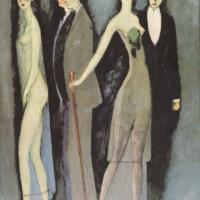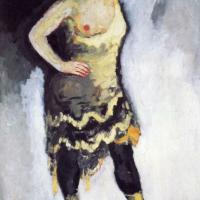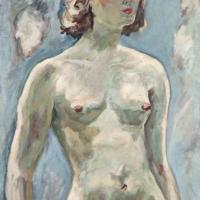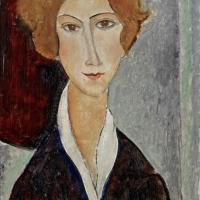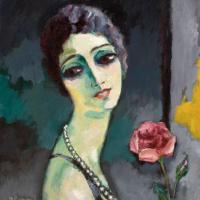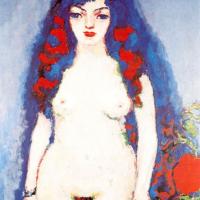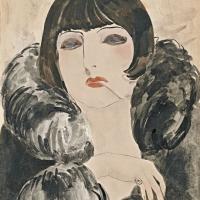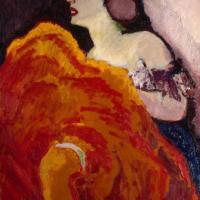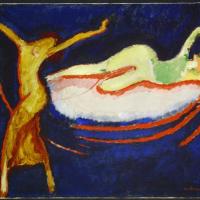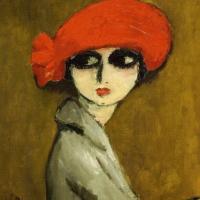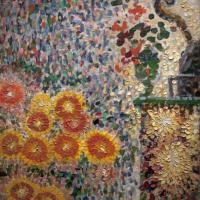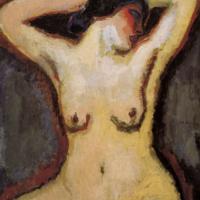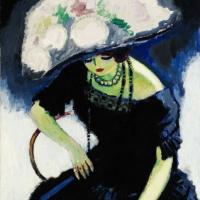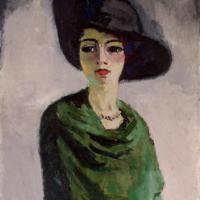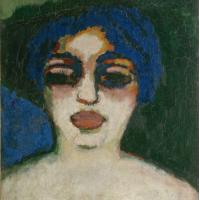Kees Van Dongen
Monique Au Chapeau
$450.00
Montparnasse Blues
$450.00
Nu Debout
$450.00
Portrait De Femme
$450.00
Portrait of a Nude Woman
$450.00
Red Dancer
$450.00
The Corn Poppy
$450.00
Torse
$450.00
Woman In A Black Hat
$450.00
Woman With Large Lips
$450.00
Kees Van Dongen
Kees Van Dongen (1877-1968)
Cornelis Theodorus Maria 'Kees' van Dongen (26 January 1877 – 28 May 1968) was a Dutch-French painter who was one of the leading Fauves. Van Dongen's early work was influenced by the Hague School and symbolism and it evolved gradually into a rough pointillist style. From 1905 onwards - when he took part at the controversial 1905 Salon d'Automne exhibition - his style became more and more radical in its use of form and colour. The paintings he made in the period of 1905-1910 are considered by some to be his most important works. The themes of his work from that period are predominantly centered around the nightlife; he paints dancers, singers, masquerades and theatre. Van Dongen gained a reputation for his sensuous - at times garish - portraits of especially women.
Van Dongen began to exhibit in Paris, and participated in the controversial 1905 Salon d'Automneexhibitio along with Henri Matisse, André Derain, Albert Marquet, Maurice de Vlaminck, Charles Camoin, and Jean Puy. The bright colours of this group of artists led to them being called Fauves('Wild Beasts') by art critic Louis Vauxcelles. Van Dongen was also briefly a member of the German Expressionist group Die Brücke.
In these years he was part of an avant-garde wave of painters, including Maurice de Vlaminck, Othon Friesz, Henri Rousseau, Robert Delaunay, Albert Marquet, Édouard Vuillard, who aspired to a renewal of painting which they thought was stuck in neo-impressionism.
In 1906, Preitinger and van Dongen moved to the Bateau Lavoir at 13 rue Ravignan in Montmartre, where they were friends with the circle surrounding Pablo Picasso and his girlfriend Fernande Olivier. He taught at the Académie Vitti in 1912.
In addition to selling his paintings, van Dongen also gained an income by selling satirical sketches to the newspaper Revue Blanche. He also organised very successful costume balls in Montparnasse, to which people paid admission, to gain extra income.
After the First World War, under the influence of his companion, the fashion director Lea Alvin (Jasmy Jacob), among others, van Dongen developed the lush colours of his Fauvist style. This earned him a solid reputation with the French bourgeoisie and upper class, where he was in demand for his portraits. As a fashionable portraitist, he was commissioned for subjects including Arletty, Louis Barthou, Sacha Guitry, Leopold III of Belgium, Anna de Noailles, Madame Grèsand Maurice Chevalier.
With a playful cynicism he remarked of his popularity as a portraitist with high society women, "The essential thing is to elongate the women and especially to make them slim. After that it just remains to enlarge their jewels. They are ravished.” This remark is reminiscent of another of his sayings: "Painting is the most beautiful of lies".
The social and commercial appeal of his later work (such as a 1959 portrait of Brigitte Bardot in a little black dress, with her hair tousled) did not match the artistic promise or the bohemian eroticism of his first three decades of work.
From 1959, Kees van Dongen lived in Monaco. He died in his home in Monte Carlo in 1968. An extensive collection of van Dongen's work is held by the New National Museum of Monaco.



